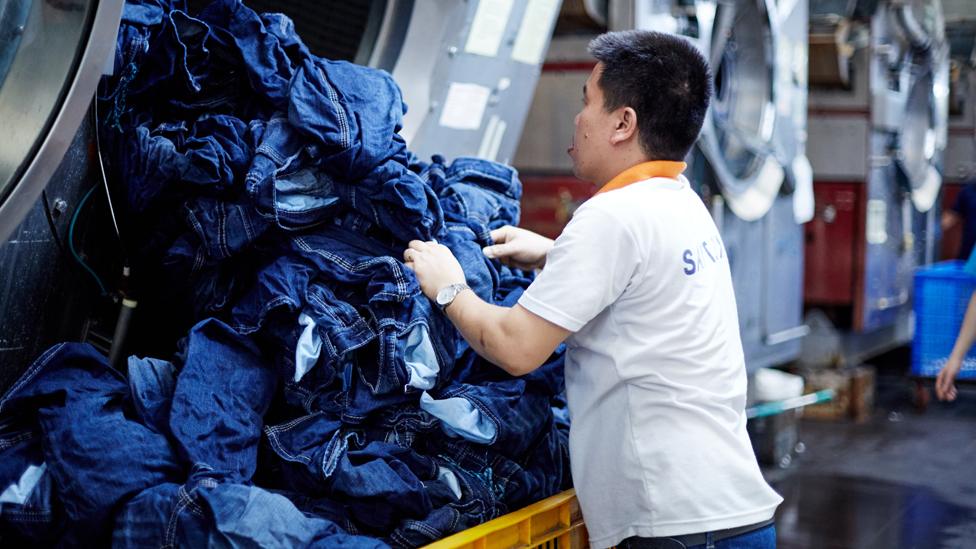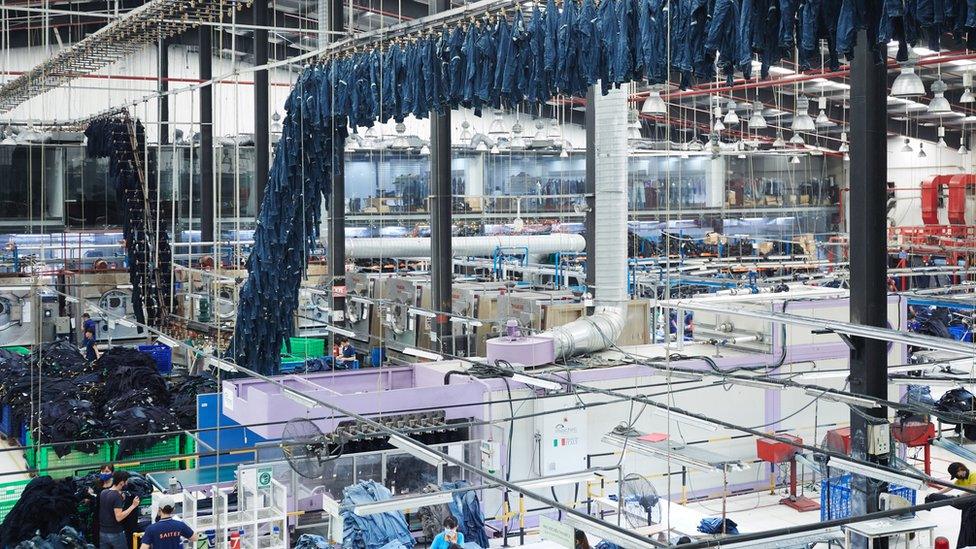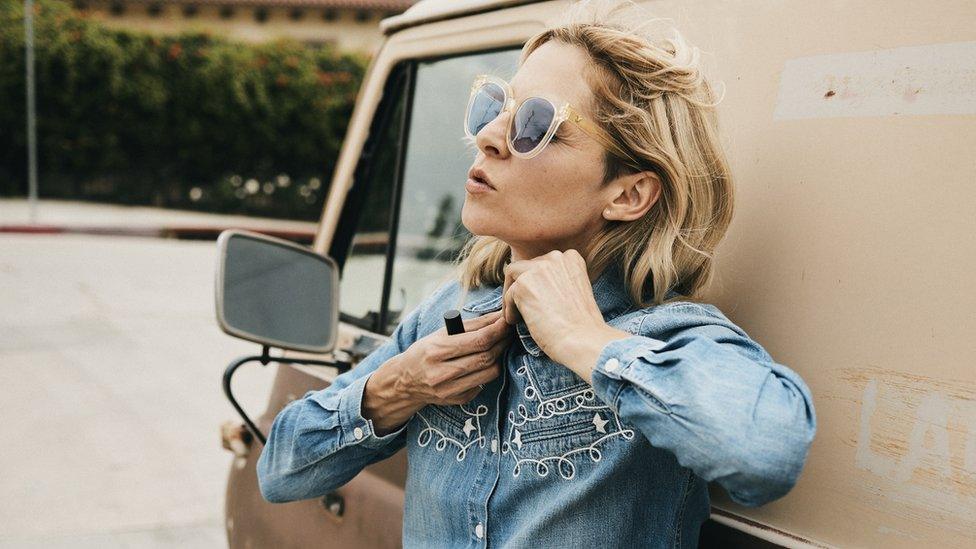Why blue jeans are going green
- Published

Jeans, such as these at Saitex's factory in Vietnam, can now be made without waste water being released into the environment
As consumers become ever more concerned about environmental and ethical issues, pioneers in the global denim industry are cleaning up its act.
Blackhorse Lane Ateliers, which describes itself as a "craft jeans maker", has an open-door policy.
"Anybody can walk in here, even without an appointment," says Han Ates, the founder of the London-based small business. "Through that we create transparency."
Transparency has become a buzzword in fashion of late, with labels keen to show their best practice, both in terms of how well they treat staff and how environmentally friendly they are.
By opening up its doors, Blackhorse Lane Ateliers is able to show potential customers that its factory is clean, the 20 employees are happy, and that the jeans are worth keeping - rather than throwing away at the end of each season.

Hans Ates says that members of the public are welcome to come and see how his company makes jeans and other denim products
Visitors to the workshop can even get a bite to eat, as it is home to a pop-up restaurant at weekends. "When you are connected to your local community, then you become accountable," adds Mr Ates.
More importantly, Mr Ates says that his company sources all its rolls of denim from mills in Japan, Italy and Turkey that he has personally visited to ensure their commitment to environmental and social responsibility. This is vital for any jeans company that wishes to be ethical, because the manufacture of denim can be heavily polluting., external
Textile industry consultant and expert Andrew Olah says that making jeans can carry a steep environmental toll, because the dye used to give them their usual blue shade - indigo - does not easily stick to the raw cotton.
"To get the dye on, we have to dye the fabric multiple times," he says. "And by dying it multiple times, obviously we need to use more water and more energy."
Then a jeans-maker may wash and bleach the jeans many times to lighten the colour, creating even more waste water. By some estimates it can take thousands of gallons of water to make one pair of jeans. "The industry use a huge amount of water, and a huge amount of energy," adds Mr Olah.

Jeans are a staple clothing item that most of us own and wear
In many denim mills and jeans factories the used water - which contains the dye, plus bleach and other chemicals - is simply released as waste water. Thankfully a growing number of producers are now eliminating waste water altogether.
Saitex International, a jeans manufacturer based in Vietnam, is one such business. Its factory, located 30km (19 miles) outside of Ho Chi Minh City, now recycles 98% of the water it uses. For the remaining 2% it has an evaporation system, making it a zero discharge facility.
Owner Sanjeev Bahl says that before setting up the factory in 2010 he "started looking at sanitation, or inadequate sanitation, globally, and the lack of clean drinking water".
"Morally it pushed us to start looking at water as a very valuable resource."
With 5,000 employees, Saitex makes denim clothing lines for brands including J Crew, G-Star Raw and Everlane. Mr Bahl says it took the company just six years to earn back the money it invested in the water recycling technology.

Jeans made to a high environmentally friendly standard are often more expensive
"What we realised is that it's not just mission orientated," he says. "If you do it right, it can be financially beneficial as well."
Some of the big name jeans firms are also working hard to reduce their environmental impact. None more so than Wrangler, whose owner Kontoor announced last month that it was introducing a new technology allowing it to dye denim without using any water., external
The company says it is able to do this by using a foam instead of water, and that the process also reduces energy use by 60%.

Global Trade

"We're proud to have helped pioneer a technology that has the potential to revolutionize sustainability standards for denim," says Tom Waldron, Wrangler's global brand president.
Amy Leverton, a denim industry consultant based in Los Angeles, says she hopes that such examples of best environmental practice and transparency become wider known.
"That's really, really important," she says.

Amy Leverton says it is pleasing to see the jeans industry reduce its impact on the environment
Richard Lim, chief executive of UK-based consultancy Retail Economics, questions what percentage of shoppers are currently happy to pay the higher price tag that more ethically sourced jeans often carry. At Blackhorse Lane Ateliers, for example, its most expensive jeans cost £260.
"With some of the research that we've done, when you ask consumers about what their primary motivations are for purchasing in apparel, then it's about price, it's about convenience, it's about range, quality of product," says Mr Lim.
"And actually, sustainability - and ethical sourcing - doesn't necessarily sit within the top three of what's important for consumers when thinking about purchasing for apparel goods."
But he says that the situation is changing, with rising demand for more ethical clothing being led by young people.
"They've become a lot more focused about the societal impact that they're having, whether that's on the environment, the economy, and other areas as well," he says.